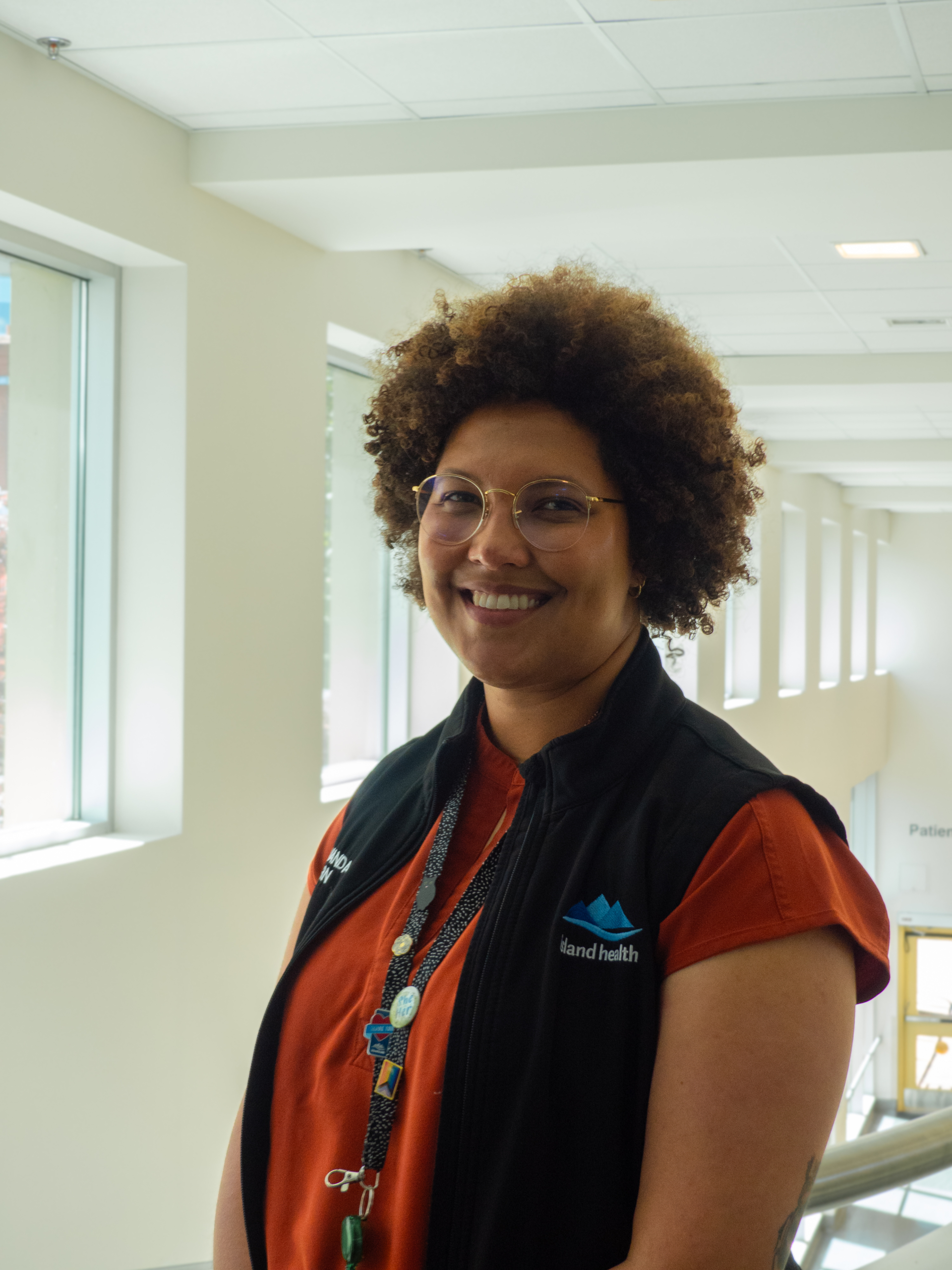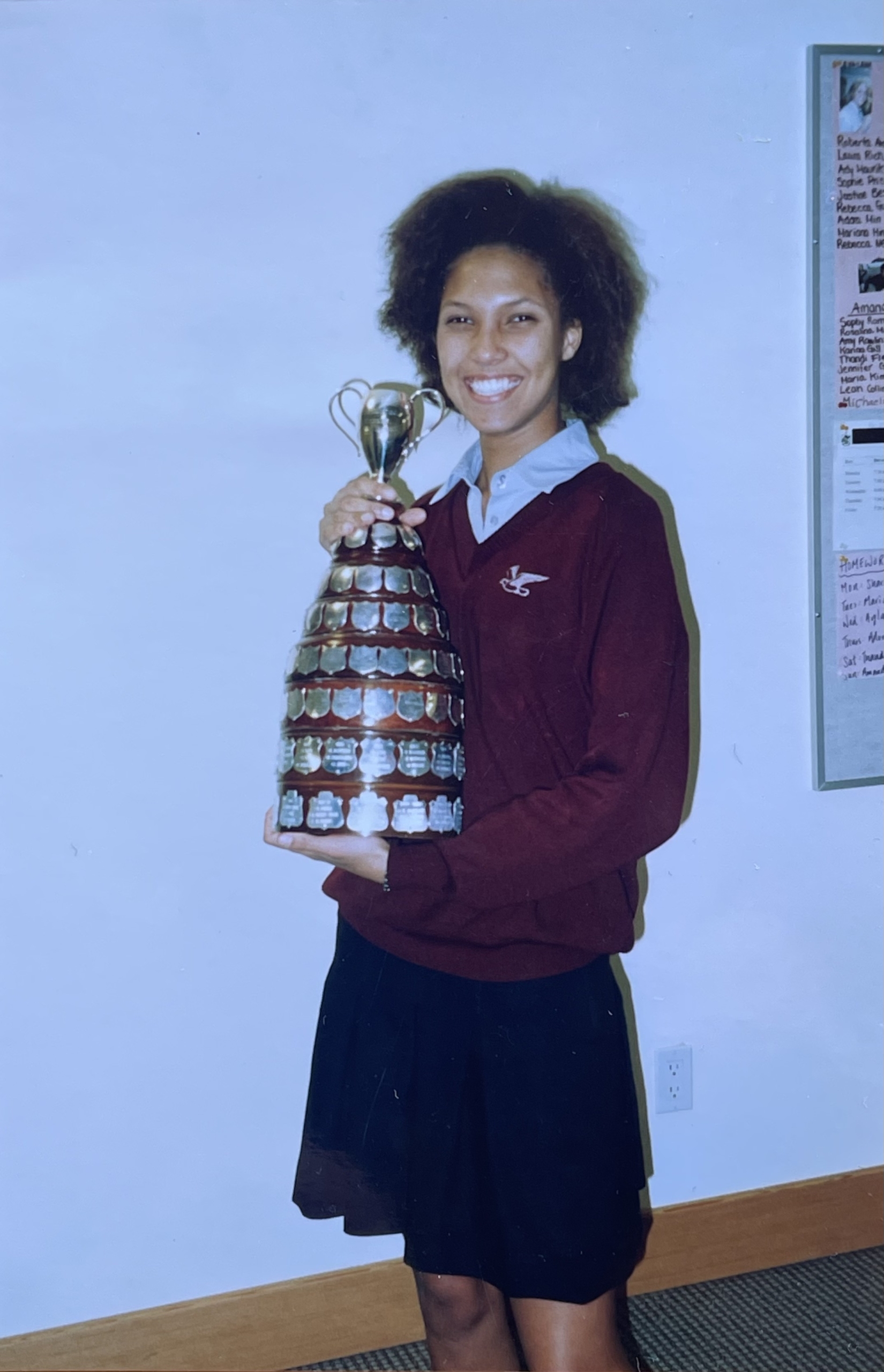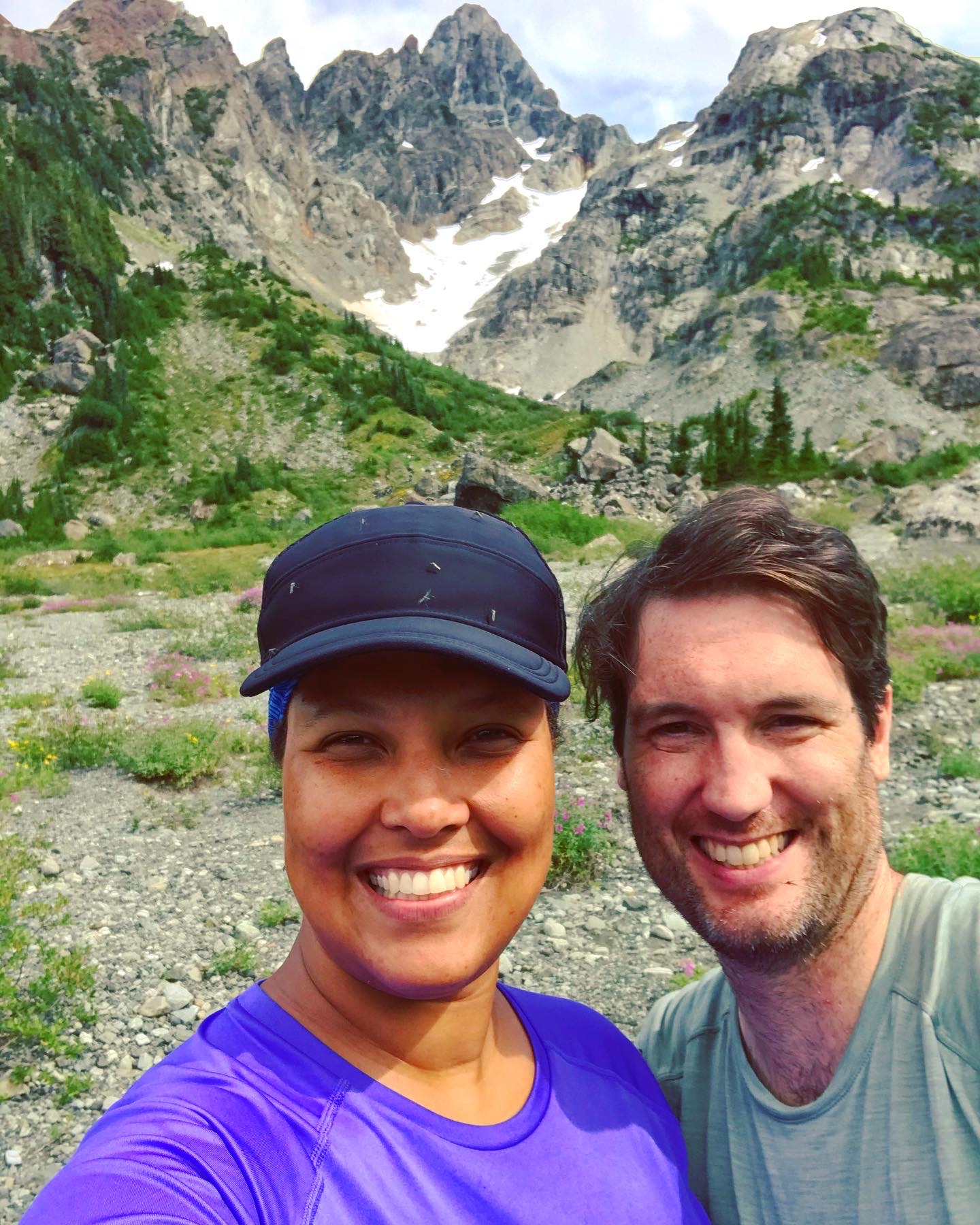
Amanda Banks
Palliative Care RN, Wife, Daughter, Artist, Dream Chaser, Human
I was working on floor 8 South at Royal Jubilee Hospital when the Palliative Unit there was first established. Since that time, I have always loved palliative care. Passing is, aside from birth, our biggest life transition. It’s an immense honour and privilege to be able to guide and support patients and their families through this process. We aim to give our patients as dignified and comfortable of a death as we can.
Palliative is a very different atmosphere than many other areas of care. It’s not treatment focused, it’s more patient-goal-directed. You have to learn to slow down. Being able to spend time with these patients and their families has been very impactful for me. I’ve been trying to slow down in my day-to-day life as well. Working in a palliative care environment, you’re so often reminded of what is really important. We as humans work to live, we don’t live to work; but it’s easy to forget that. I wish I had considered the effects of overworking earlier in my career — it took me nine years to start establishing good work-life balance — but since leaning into palliative care, I have learned so much.
“Working in a palliative care environment, you’re so often reminded of what is really important.”
Outside of work, I love to make art. I work primarily with ink and water colour. I’m currently in the process of setting up an art business on the side to sell my work. I’ve done some commissions, and have been applying to various places around town that feature local artwork too; plus hopefully I’ll have a website up by the end of the summer. Recently I’ve been doing a series on heritage houses here in Victoria. I like to walk around and look at our local architecture. Victoria has a rich history and where I grew up, in Nairobi, we didn’t have very many old buildings, so I’ve always liked the buildings here in town and the stories behind them.
I moved from Kenya to Canada as a teenager to attend boarding school at Shawnigan Lake. Kenya is much more developed than most people think — we don’t live in mud huts — but coming to Vancouver Island brought some big changes for me nonetheless. I had my first fall & winter. I found out how cold the ocean is here. I experienced being a very visible minority. And I also witnessed the natural beauty of the island; the trees especially. I felt like, Surely this many trees can’t exist in one place! It was a huge adjustment, but a welcome one.
“I felt like, Surely this many trees can’t exist in one place! It was a huge adjustment, but a welcome one.”
I came to the Island on my own. I had some family friends and an aunt and uncle in this area, and my brother followed me here a couple years later, but the rest of my family stayed in Kenya. Since then though, I’ve really been able to establish a life here. My husband is from the Island, so I’ve now got extended family here as well. I’m very grateful to my parents for letting me follow my dreams across the world as a teenager and come here.
One person who has really inspired me to chase my dreams further is a friend of mine named Mary Tidlund. She’s a woman of colour who owns her own philanthropy organization. She’s taught me to go for things even when people think that you can’t do them, that you don’t look the right way or have the right background – to just ignore the haters and try it out. What’s the worst that could happen? They’ll say no, which is no different from not trying in the first place. I always want to encourage younger women to pursue STEM if that appeals to them — to branch out of their comfort zones and try something new. My parents were not in medicine; to them, it was strange for me to go into this field. But here I am. I hope I can encourage others to do the same.
For me, to be human is to be present in the now with the people you love. To be aware of your surroundings: the ways you influence those around you and ways they influence you. If we all do that, I think the world will be a much healthier place.
“Go for things even when people think that you can’t do them… What’s the worst that could happen? They’ll say no, which is no different from not trying in the first place.”
They are humans first, who put other humans first.
More than 8,900 caregivers and staff work around the clock in our Victoria Hospitals
#HumansFirst is dedicated to sharing the stories from behind our hospitals’ frontlines. These stories remind us that those who provide care and keep the lights on in our hospitals also have lives outside of them. They have family and friends, they enjoy hobbies and interests, and they have all lived through their own personal triumphs and heartbreaks. Like all of us, they are human, and they have a story to tell.







